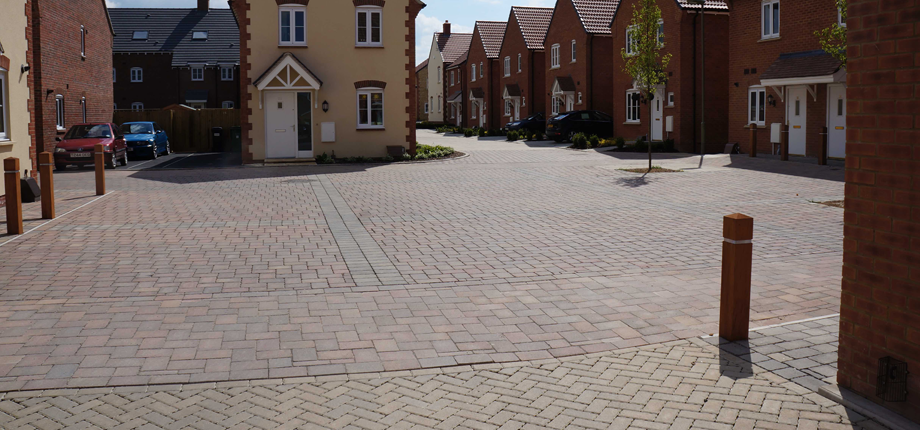The trade body Interpave calls on housing providers to take the lead in developing wider use of sustainable drainage (SuDS) and concrete block permeable paving on developments, in line with national planning policy.
Some 20 months ago, the Government chose to abandon dedicated requirements for SuDS on new developments using the 2010 Flood and Water Management Act. Instead, an additional policy now sits alongside the National Planning Policy Framework (NPPF), spelling out “the Government’s expectation … that sustainable drainage systems will be provided in new developments wherever this is appropriate”.

In addition, existing NPPF prioritisation of SuDS in areas of flood risk and requirements that developments should not make flood risk worse elsewhere – often by utilising SuDS – still apply to developments of any scale. The onus for implementation has now moved to local planning authorities (LPAs) in England through local policies and planning application decisions on developments of 10 or more dwellings. While some LPAs have embraced SuDS and expanded their wider use through local policies, this is slow and sporadic, and more needs to be done.
Positive Assessment
The time is right for responsible housing providers and developers to positively assess SuDS and their wider benefits for themselves, not just reject them out of hand. There is plenty of evidence to demonstrate that well-designed SuDS cost no more to install or maintain than conventional piped drainage, particularly when considered as multifunctional elements within the overall project design, as highlighted in the Code of Practice for Surface Water Management BS8582:2013. By its very nature, concrete block permeable paving is uniquely placed as a multifunctional SuDS technique.
Of course, hard surfaces are necessary for housing anyway – whether for traffic, parking, pedestrians or play. But permeable paving also provides an inherent drainage system, addressing both flooding and pollution issues by attenuating and cleaning water runoff at source. This technology eliminates pipework, gulleys and manholes, and should cost less than conventional drainage. Concrete block permeable paving can simply infiltrate to the ground where conditions allow or, more commonly, collect water for transmission to other SuDS features along the ‘management train’ or to conventional drainage.
Low Cost SuDS
Following some 25 years use in the UK and abroad, concrete block permeable paving has proved to be a predictable, reliable and low-cost SuDS technique. Its capability to attenuate water flow during rainfall for gradual discharge is well known. But this principle is transformed by considering distinct storage ‘sub-catchments’ of permeable paving using straightforward flow control devices with an orifice – accessible for observation and adjustment if needed – on the outlet. This enables water storage to be strategically deployed around a site within permeable paving, with flow controls demonstrating compliance to local authorities as part of the SuDS design approval process. Dedicated water storage on valuable land and associated excavation and construction costs are avoided
Of course, permeable paving will help to define the character of a development. The growing choice of concrete block permeable paving products available from Interpave manufacturers – with numerous shapes, styles, finishes and colours – allows real design freedom. At the same time, it can provide completely level, well-drained, firm and slip-resistance surfaces that are accessible to all, without the need for cross-falls, channels, gulleys or other interruptions. Rainwater ‘ponding’ is eliminated, reducing the risk of ice forming on the surface and preventing splashing from standing water.
Enhanced Landscape
A major strength of concrete block permeable paving is removal of water-borne pollution offering the important – and often missed – opportunity of a gradual flow of clean water to enhance landscape design and biodiversity. With concrete block permeable paving, SuDS offer housing providers, developers and designers real opportunities, rather than technical problems to be solved. Taking a holistic approach, they can now embrace SuDS as one of the central design considerations from the very start of a project.
Guidance on SuDS and concrete block permeable paving can be downloaded via the Interpave information resource at: www.paving.org.uk
- Log in to post comments















